At €11000 plus taxes as tested the Lampizator Big 7 is certainly no budget DAC, but does it deliver on sonic ability? Stuart Smith finds out.
I first heard the Lampizator Big 7 last year at Munich High-End in the Sound Galleries of Monaco booth, along with a pair of Avantgarde Duos, cables from Tellurium Q and room treatment by GIK and for me it was one of the standout sounds of the show. Now we put an order in for a pair of the new Duo XDs at Munich and we use TQ speaker cables in the main system much of the time along with GIK’s room treatment panels and so it seemed a sensible to at least audition the Big 7 to see if we would get along with it at home. Of course, if we liked it, there was always the option to dig deep and make it a permanent fixture. And you will need to dig deep if the Big 7 does the sonic business for you as it comes in at a not inconsiderable €11 000 plus appropriate taxes as featured here.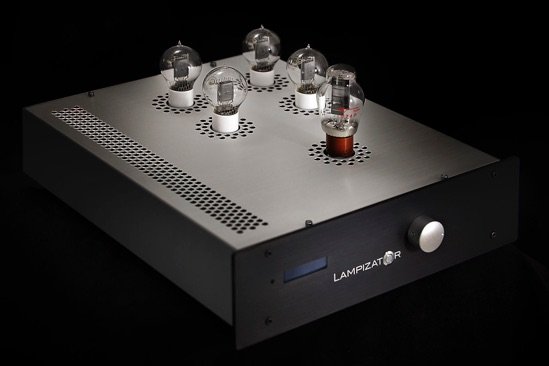
Let’s get the negatives out the way first because there are a few issues I have with this unit, and, whilst these issues are not deal breakers by any stretch of the imagination, I do think certain features could be improved upon. First of all we have the packaging that this particular unit came in. Yes it arrived safe and sound, but this is a premium product and as such I expected much more than (an admittedly double boxed) package with what looked like off cuts of packing foam to protect the unit – I expected that Christmas morning feeling that we constantly bang on about! Of course this would add to the already not insignificant cost of the Big 7, but come on guys! Secondly is the joke of a remote control which is a cheap, plasticky affair that would be more at home with a seventy five quid portable television from CostCo or Argos. Finally the unit supplied had a loose digital RCA input that required tightening…this meant taking off the top of the DAC and sorting it out myself…this really should have been checked at the final stage of packing!
Now I’ve got that little lot off my chest let’s begin with the review proper.
So what do you get for your money when you buy the Lampizator Big 7? Actually you get a pretty comprehensive unit that, although expensive, can save you a few quid elsewhere in your system. The sample we have here has the preamplifier board built in that has one input via RCAs, meaning that you can use the Big 7 without a separate preamplifier and feed it straight to your amplifier (s) of choice, saving you the added expense of buying a pre. This of course only works if you have a relatively basic system, but to be fair the vast majority of folk will be catered for in this respect as you can put your CD’s digital out in to the Big 7’s S/PDIF input, your computer’s USB out into its USB input (32 bit/384 kHz PCM and DSD upto 128x ) and your phonostage (or whatever else you have that feeds a line signal) into the preamplifier section’s RCA inputs. Outputs offered on the model we have are a pair of RCAs and a pair of balanced XLRs. There’s also an AES/EBU input on XLR but that hasn’t been used. So, connection wise you are nicely covered with the Big 7 and could run a system with just a computer or transport, the DAC, amp and speakers should you wish.
On the front of the unit you get the volume knob (on this version) and an LCD display showing you the input you have selected and volume…it’s not a great display and I had to be close by to see what was selected.
Via USB you get a DSD engine that will deal with 64x and 128x and whilst I’m well aware that there is a number of people who believe that DSD is little more than a fad I would say that these folk should go out and take a listen to a properly encoded DSD recording on a proper DAC and then make their minds up. The DSD engine uses “unmanipulated, filtered, raw, native data-stream as the signal” which essentially means there is as little as possible happening to your DSD signal before it is output. Inside the Big 7 it has to be said that it is beautifully put together and is a bit of a testament to the engineer’s skill. There are two standard chokes (the Golden Gate version has “premium chokes”) Copper/wax Jupiter caps and the unit comes as standard with four 101D Psvane tubes and a Shuguang 274B rectifier tube. Now as we are on with the tubes, you can do a good degree of tube rolling (I chose not to) and use 101D, 45, 245UX or 2A3s with the heater voltage being changed accordingly by a switch inside the DAC. Wiring inside the unit is all silver in Teflon and you get separate transformer windings for the valve circuit, a separate transformer for the digital section and separate secondary windings “for every task”. As with most reviews I write I won’t get bogged down in the technical side of things as I just don’t have the knowledge or interest other than the end result and the music that comes out the speakers and so urge you to read the Designer’s Notes that follow this review.
The Big 7 is so called with good reason because whilst it may not actually be that heavy (it weighs 16KG) it is pretty large, particularly in depth, measuring 45cm in width, 12cm in height (25cm if you account for the tubes) and…wait for it…53cm deep. Most racks will not accommodate this depth of course, but the Big 7 has six feet underneath meaning that the front two pairs will sit nicely on a standard depth rack, with the remaining pair and the back end of the DAC overhanging by 12cm on the IKEA unit I had it sat on. This is not a problem for me as I have plenty of space behind the current racks, but will mean you’ll need to pull your rack away from the wall a little further than usual…and don’t forget you’ll need space for cables too.
Apart from the gripes I outlined at the start of this piece, the Big 7 we have has been well put together, looks pretty neat (despite its size) and whilst it’s not got that “built like a tank” or luxe feel to it, it is reasonably nicely finished and feels relatively solid.
I used the Big 7 with the usual suspects – Musical Fidelity NuVista CD as transport, Laptop running JRiver and set up as per the instructions Lampizator publish online, Merrill Thor amps and a variety of cables from Chord, Tellurium Q, Atlas and Vermouth Audio. Over the time the DAC has been with us it has been used with a whole host of loudspeakers including the hORNS Mummys, Leema Xens and more latterly the Avantgarde Du XDs. Power to the DAC was filtered using the LAB 12 gordian.
First let’s have a chat about the Big 7 in use as it is not your usual “plug and play” type scenario. You turn the Lampy on with a big toggle switch located round on the back panel. This is centrally located and whilst it’s pretty easy to find, I would have preferred to have this on the front, on the side, or even underneath the DAC. Flick the switch and the unit slowly comes to life and the warm glow of the valves begins. Now you need to pick up the remote, choose your input and then turn the volume of this input up. As you turn the volume up there is an audible clicking inside the DAC which was at first a bit disconcerting. The unit defaults to zero every time you turn it off and this is a bit of a pain in the arse in the beginning until you get used to it, and the remotes “unique” layout…I can’t help thinking that a dedicated and nicer remote would be far superior, but I have to temper my frustration here and remember that the Big 7 is made for audio enthusiasts in the truest sense of the word…but then at the same time I can’t help thinking that we live in the 21st Century and really don’t need to be wearing hair shirts to get the best sound out of our systems.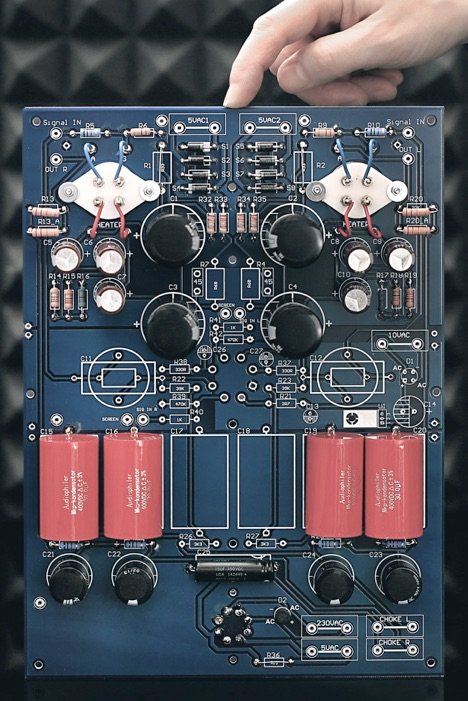
I’m reading this review through in my head and I can sense that a good few readers will be thinking that this review is going to absolutely pan the Big 7 given everything I have said up to now, but I urge you to read on as despite the obvious shortcomings of certain aspects of the DAC’s makeup, in the end what interests me most in a product that comes in for review is the pleasure (or otherwise) that it affords me sonically.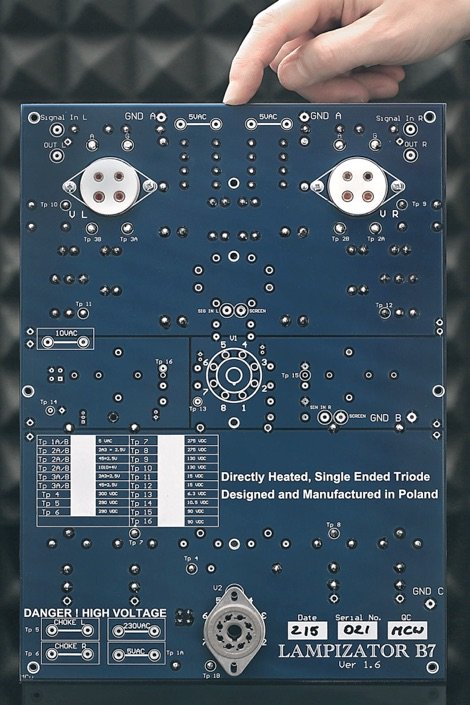
SOUND
OK, it would be easy to sum up the sound when listening to DSD files as nothing short of an absolute aural revelation that simply took my breath away with each album I listened to. The immediacy and realness of what was coming out of the speakers was, in my experience, simply without match. Jazz At The Pawn Shop is a great recording in any case, but using the Naxos 2xHD file at 128x DSD ( LINK ) was nothing short of overwhelming. This is as near to a group of musicians sitting in my front room as there has ever been. This may well sound like reviewer hyperbole but I mean it…this is stunning stuff. Every nuance of the recording is laid before you, every part of the musicians’ playing style becomes apparent and you cannot help but just get lost in the music and the experience. I found myself listening to classical music on DSD simply for the sonic thrill of it all…I may not appreciate or particularly like the tunes, but the Big 7 lays an orchestra before you like I have never experienced before. Native Stereo’s “8 Ensembles in 1 Bit Stereo” is gripping, with the New Amsterdam Voices version of Randy Newman’s Short People being a bit of a standout. You can sense the recording space and you can hear every nuance and inflection in this septets’ delivery. I know it’s a bit of a Hifi cliché to harp on about the musicians “being there”, but with the Big 7 playing DSD files this is truly what you get…and it’s addictive stuff. There is a purity and rightness to the sound that is hard to describe. Yes all the component parts of bass, mids and treble are of course there, but the Lampizator does something exquisite to the DSD signal that “adds” another, wholly beautiful aspect to the music. Soundstage and imaging are “reach-out-and-touchable” with you able to aurally see the performance that is being presented before you without it feeling false. Sadly I don’t have a whole load of DSD files but the few that I do have are presented in such a fashion with the Big 7 that I became somewhat obsessive in playing them, again just for the pure and unadulterated feeling of flawlessness I got when listening to them.
Feeding the Big 7 with hi-res files from the laptop was only slightly less impressive and this is more down to the format than the fault of the DAC itself I reckon, although on techno and more “machine-made” music I did feel the Lampy lost a bit of the pizzazz you get when throwing properly recorded musicians at it. This is not to say the Big 7 is not impressive with this kind of music, it is, very, it’s more that where this DAC really does shine is on well recorded, live music where you get to experience the real feel of the recording space and the musicians within it. With techno you still get that reach out and touch it feel of the mix that surrounds you in an almost (another cliché alert) three dimensional way, but it’s just not as extraordinary as when listening to the other music I mentioned. However, what you do get when playing this kind of music is a full representation of what is on the original file – bass is hefty and pumping and hats are shimmery and sparkly. I listen to a lot of this kind of stuff and again became really addicted to it playing on the Big 7.
I should add here that the settings that Lampizator suggest you use for JRiver (as I understand it) upsample the PCM signal to DSD and I reckon this is certainly a good thing. I didn’t bother listening to straight PCM files from the computer as I really saw no point.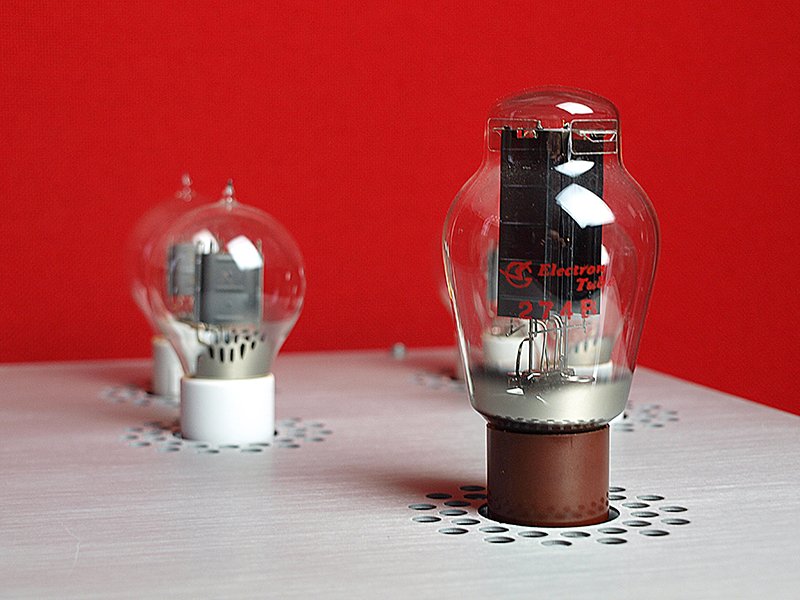
When playing CDs through the DAC you get the feeling that you are losing a little of the three dimensionality you get when playing DSD and hi-res files but you still get a really beautiful rendition of the music and that “live” feel. On rock like Deep Purple’s Live in Japan there is the gut wrenching bass apparent on Smoke On The Water (any product that can’t do this gets short shrift from me) and again a feeling of there being real musicians in front of you, but there is a feeling that you are using a really refined and beautiful product to reproduce music that is just the opposite…sort of like having Lemmy (RIP) play a Stradivarius… I hope that makes sense. Where the Big 7 really shone for me on CD was with vocals and real instruments. The DAC just brings a feeling of rightness to proceedings that you just can’t help but sit there with a smile on your face and get lost in the moment.
CONCLUSION
I have real issues with companies that feel it is OK to skimp on things like packaging and finer details like decent remotes and I do think that Lampizator need to pull their finger out in this regard. It is inexcusable that a creation costing this kind of money should come packaged like a second hand product you bought off Ebay and the less said about the sorry excuse for a remote the better!
That said, sonically, the Big 7 from Lampizator is without a doubt the finest DAC that I have yet to experience in my home, though I would love to have it up against the completely different approach of the Chord DAVE. When compared to my reference DAC (VAD DAC) it comes across as (simply put) just better in every regard other than build which it equals…it should as it’s more than twice the price.
The Big 7 manages to sound unprocessed and pure in its presentation of everything you throw at it and with a fluidity and openness that just has you glued to your seat. The Big 7 is a truly breathtaking creation that brings a degree of enchantment to a listening session that is hard to ignore, and with live, well recorded music it is truly spectacular in what it does. There are going to be reviews of the Big 7 that will waffle on about how it makes the digital format sound analogue, but that is to miss the point completely I believe. Of course it doesn’t make digital sound analogue…it takes a digital signal and presents it in a fashion that is natural and unadulterated and as such allows you to connect emotionally with the music you are listening to…and for me that is what all this is about.
Build quality, aside from the loose RCA on our sample, is acceptable in a no-nonsense kind of way and, whilst the Big 7 isn’t going to win any beauty contests, it looks pretty neat sat on the rack.
This is not a product for the average person I don’t think and you do need to be able to look (and hear) beyond the Big 7s physical presentation, but if you do you will be amply rewarded.
Would I recommend the Big 7 from Lampizator? It is expensive without a doubt and the value is not immediately apparent – there is no bling, no ostentatious detailing and it all looks pretty workaday, but turn it on, faff with the remote (it’s not immediately intuitive), settle into your listening position with a glass of something nice and you will be transported to musical delight. So yes I do recommend it and if you are on the look out for a new DAC and can afford the asking price I would strongly suggest you audition it.
Build Quality: 8.1/10 (simply down to the remote and packaging)
Sound Quality: 9.5/10
Value for Money: 8.5/10
Overall: 8.7
Pros:
Simply stunning sound
Tube rollable should you feel the urge
Cons:
Packaging and remote are poor
Display too small
Expensive
Designer’s Notes
“I have something very special for you. Something from the heart. My gift. “ I heard my Master of tubes Evgennyi saying something like this very rarely, if ever. He was a shy, down to earth engineer, totally immersed in the electron cloud.
He pulled from the box a strange preamp, with huge tubes. It looked like a typical 300B amp.
“Why such gigantic tubes?” I asked, “what is so different about them ?”
“I can’t explain this, nobody can. But they have special grown up sound.” What ? grown up sound? What do you mean ? He did not answer, and I never saw him again. He passed from lung cancer with a cigarette in the corner of his lips, just few months later.
To this day I can’t explain it myself, because we can’t measure it or pin it down but the big DHT tubes do sound different compared to typical small signal novals. Even with the same amplification, same current, same signal – the sound is … well … grown up. It is effortless, smooth, dynamic and 3D. It is addictive. I made my prototype 4 years ago with Russian 300B and ever since the DHT DAC became my obsession. It took us one year just to get the heaters right and another year to do everything else. These DHT tubes present huge challenge. The heating circuit and the music circuit are mixed together, entwined. …try try try to separate them – it’s an illusion …” as the song goes. For whatever reason working with DHT for me was 10 times harder than working with small signal tubes. Still the sound from the early prototypes was encouraging enough to keep me going. We needed to design and order custom wound power transformers, use bigger chassis enclosures, rework everything I knew about grounding, etc. The first sellable unit went to Las Vegas show in 2014 and made a splash there. Thats how the Big 7 was born. Ever since this is my best seller and the marriage of big tubes and DSD made Lampizator what it is now. I take pride in designing a “current source PSU” for tube heaters allowing us to use 101D, 45, 245, 345, 300B, 6A3, 2A3, PX4, 242, – just to list the basic DHT pool of tubes for rolling. Some of them are 100 years old. Some of them cost 5000 Euro a pair. But they have one thing in common – PEOPLE LOVE ROLLING THEM. And I tend to agree.
Łukasz Fikus





















































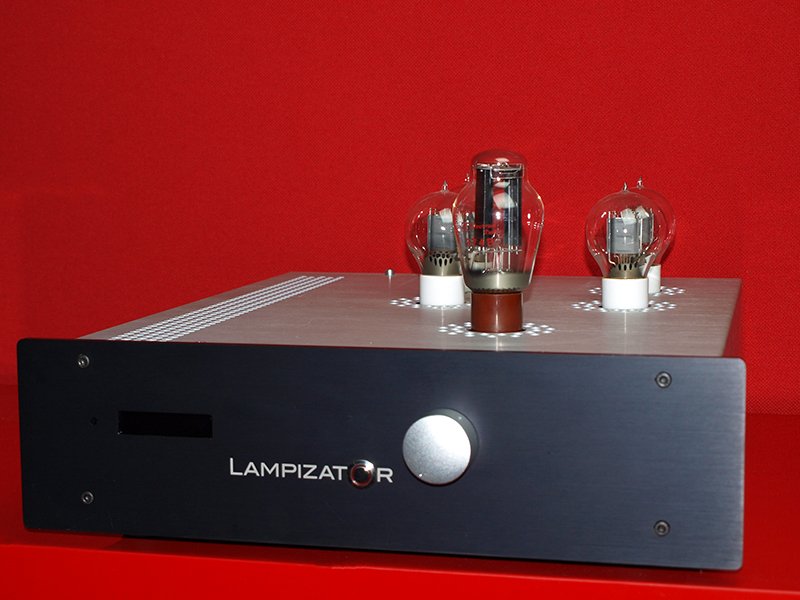
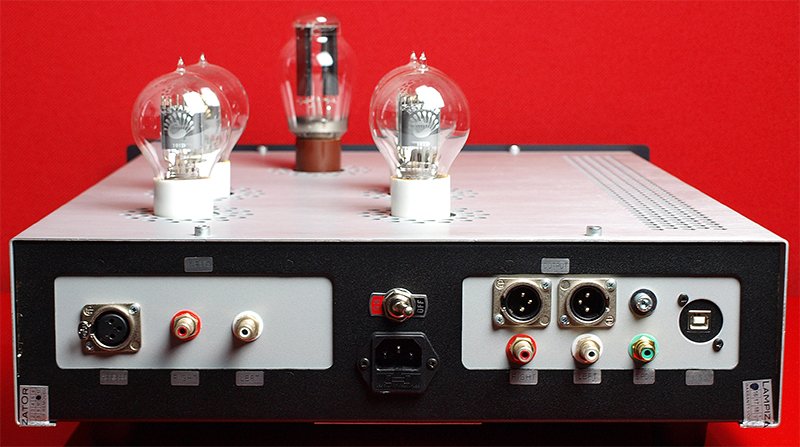

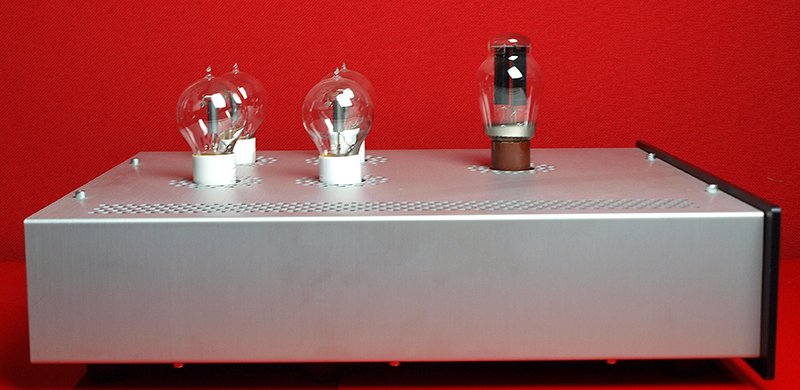
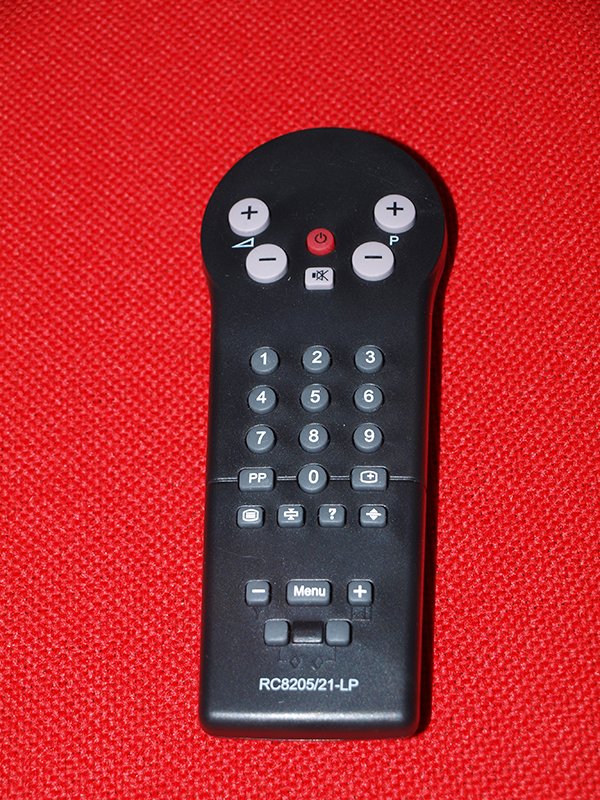

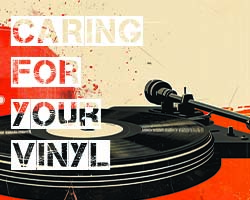
































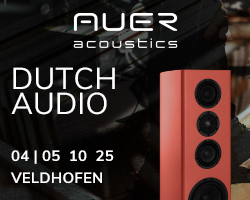















































































































You must be logged in to leave a reply.